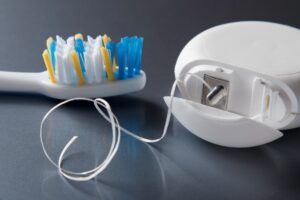
The healthcare industry has made significant strides in recent years towards the goal of interoperability. Interoperability is the ability for different systems and devices to communicate and exchange data seamlessly. Despite these advancements, however, there remain numerous gaps in healthcare interoperability, including those related to data sharing, security, and workflow. In this blog post, we’ll explore how technology is helping to bridge these gaps and drive healthcare interoperability forward.
One key way that technology is helping to bridge the gap in healthcare interoperability? Through the use of standardized data formats. In the past, different healthcare systems often used proprietary data formats. This made it difficult or impossible for them to exchange information. This lack of standardization led to siloed data and a fragmented healthcare system.
To address this issue, various organizations have developed standardized data formats such as Fast Healthcare Interoperability Resources (FHIR) and Consolidated Clinical Document Architecture (C-CDA).
These standards allow different systems to share data in a way that is consistent and easily understood by all parties. This makes it possible for healthcare providers to access and share patient information more easily. This leads to improved care coordination and better patient outcomes.
Another gap that technology is helping to bridge in healthcare interoperability is the lack of secure data exchange. In the past, the exchange of sensitive healthcare data was often done through fax or other unsecured methods. This posed significant security risks. With the increasing use of electronic health records (EHRs) and other digital systems, however, it is now possible to securely exchange data over the internet.
One way that this is being done is through the use of secure messaging platforms such as DirectTrust. These platforms use encryption and other security measures to ensure that data is protected. The data is transmitted between different healthcare organizations.
In addition to improving data security, technology is also helping to bridge the gap in healthcare interoperability by streamlining workflows. Many healthcare providers still rely on paper-based systems, which can be slow, inefficient, and prone to errors. With the adoption of electronic health records and other digital systems, however, it is now possible to automate many of the manual tasks that are associated with healthcare delivery.
For example, EHRs can be used to automatically order and track lab tests, schedule appointments, and generate reports. This can help to reduce the burden on healthcare providers. Subsequently, this will free them up to focus on more important tasks such as patient care.
One area where technology is particularly well-suited to bridging the gap in healthcare interoperability is in the field of telemedicine.
With the use of telemedicine, healthcare providers can offer remote consultations and other services to patients without requiring them to come into the office. This can be especially beneficial for patients who live in rural areas or who have mobility issues.
Telemedicine can be delivered through a variety of platforms, including video conferencing, phone calls, and messaging. With the use of telemedicine, healthcare providers can access a wider pool of patients, while patients can receive care from the comfort of their own homes.
Overall, it is clear that technology is playing a critical role in helping to bridge the gaps in healthcare interoperability. By standardizing data formats, improving data security, streamlining workflows, and enabling telemedicine, technology is helping to create a more cohesive and efficient healthcare system. As healthcare continues to evolve, it is likely that technology will play an even more important role in driving interoperability and improving patient care.
Give us a call at 855-522-2201 so our agents can give you a free quote for health insurance.







